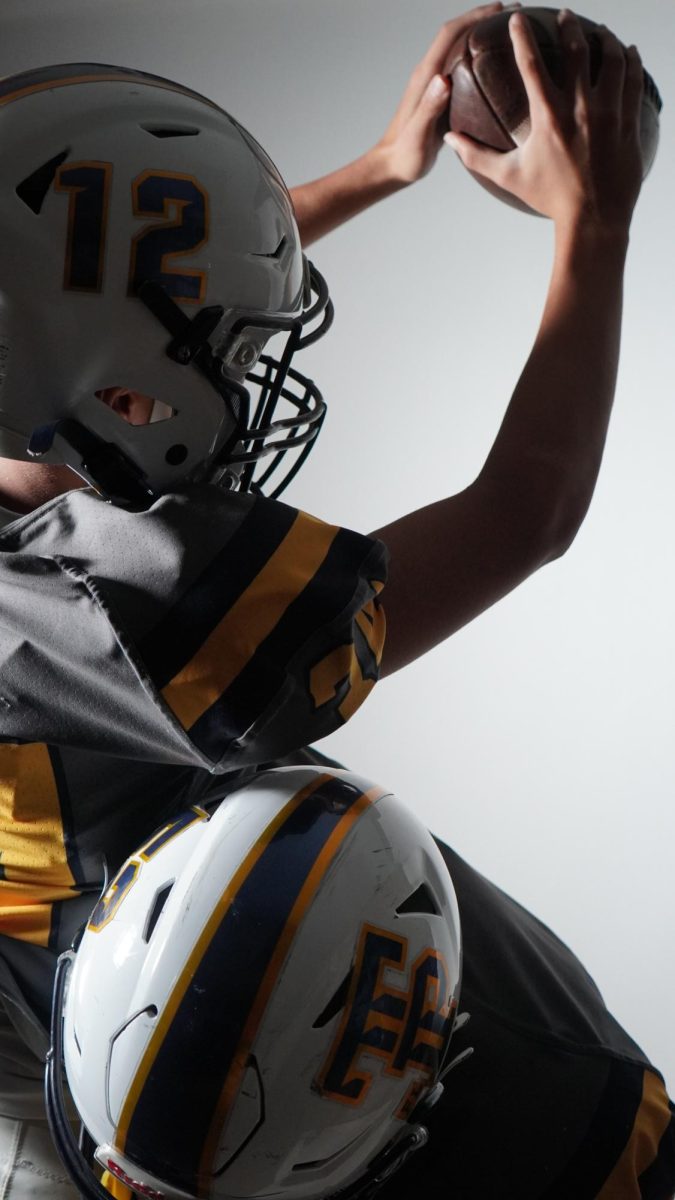The air is packed with anticipation as athletes take the field. The whistle blows and the only sound is the swift, silent snap of a flag being pulled. This is flag football — a fast-paced, no-contact game where agility and strategy outshine brute force, offering players a safer, more inclusive way to experience the thrill of football.
Flag football is a non-tackling version of American football that requires minimal equipment and often results in minimal injuries. Players are instructed to wear belts with flags on them which the defenders must grab to stop a play, as opposed to tackling them.
Recently, flag football has experienced a rise in popularity, with a 15% increase in youth participation since 2016, according to data from the Sports & Fitness Industry Association (SFIA). This spike may be correlated to the decline in tackle football, as SFIA also states that participation in tackle football for kids ages 6 to 12 went down by nearly 18% between the years of 2020 and 2021.
While every sport comes with risks, flag football is a much safer alternative to tackle.
According to a 2021 CDC study published in Sports Health, players in youth flag football leagues sustained 15 times fewer head impacts than tackle football players during a practice or game.
“Flag [football] is a non-collision sport and the refs do a very good job of enforcing that element,” head coach Harry Meyers said. “They do the best they can to ensure the players’ safety.”
Additionally, flag football leagues are cheaper to fund since the sport only requires a football and flags for each of the players.
“From a financial standpoint, [flag football] is a very cheap sport to equip which makes it accessible to most people,” Meyers said.
The sport is progressing as the American Flag Football League disclosed its plan to launch the first professional men’s and women’s leagues in 2025. In addition to this, the Olympic Games in Los Angeles 2028 announced the addition of flag football to their program. They have created both men’s and women’s teams, which has encouraged many young athletes of both sexes to participate in the sport.
“I think the addition of flag football to The Olympics is really cool and it gives female athletes more of a chance to shine because they’re overlooked a lot,” senior Lindsey Yared said.
Yared played for Trinity’s middle school flag football team along with senior Charlotte Davis in 2020. They were the only girls on the team at the time.
“It was a really fun opportunity,” Davis said. “We were like this dynamic duo.”
Flag football gives female athletes an outlet to participate in a traditionally male-dominated sport. Its usage of minimal equipment, simple set of rules, and increased safety make the sport accessible to a wider range of ages and genders. As reported by USA Football, more than 230,000 girls between the ages of 6 and 17 participated in flag football across the U.S. in 2023, reflecting a 44% rise since 2014. This growth has a powerful impact in the sports realm and may bring visibility to other gender norms that need to be renovated.
“A lot of times people have this preset mindset that football is a game for just guys, but that’s not true at all,” student coach Britt Voll said. “I’m glad more girls are getting into it.”
With its growing popularity, flag football is becoming an increasingly attractive option for players of all backgrounds.
“Flag football is a great alternative for people that don’t want to get hurt or can’t afford to play tackle,” Voll said. “It gives women an opportunity to play and it is 100% cheaper and safer, which is why I think it’s gotten really popular.”
















